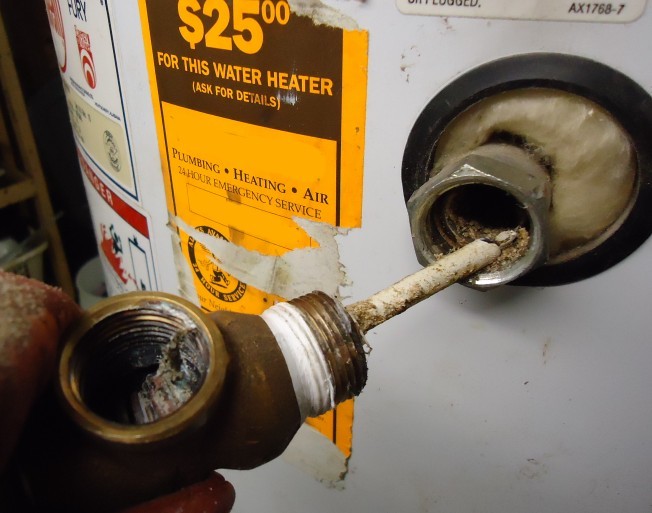We have stumbled on the article involving How to Maintain a Hot Water Heater in a Few Simple Steps below on the internet and felt it made sense to share it with you on this page.

Hot water is necessary for daily convenience, whether it's for a refreshing shower or cleaning dishes. To ensure your hot water system runs successfully and lasts much longer, normal maintenance is key. This article provides practical tips and understandings on just how to preserve your home's warm water system to avoid interruptions and costly repair work.
Intro
Maintaining your home's hot water system could appear challenging, however with a couple of simple steps, you can guarantee it operates smoothly for many years to find. This overview covers whatever from recognizing your warm water system to do it yourself upkeep tips and knowing when to call in professional aid.
Significance of Maintaining Your Hot Water System
Routine maintenance not just expands the lifespan of your hot water system however additionally ensures it operates effectively. Ignoring upkeep can lead to decreased effectiveness, greater energy expenses, and also early failing of the system.
Signs Your Hot Water System Needs Upkeep
Recognizing when your warm water system requires focus can protect against significant concerns. Keep an eye out for indicators such as irregular water temperature level, unusual noises from the heating system, or corroded water.
Purging the Hot Water Heater
Purging your hot water heater eliminates sediment accumulation, enhancing effectiveness and lengthening its life.
Monitoring and Changing Anode Rods
Anode poles stop rust inside the storage tank. Examining and replacing them when broken is vital.
Complex Problems Calling For Professional Assistance
Instances consist of significant leakages, electrical issues, or if your water heater is regularly underperforming.
Routine Specialist Upkeep Perks
Expert maintenance can include thorough inspections, tune-ups, and guaranteeing conformity with safety and security criteria.
Checking and Adjusting Temperature Setups
Adjusting the temperature level setups guarantees optimal efficiency and security.
DIY Tips for Upkeep
You can execute a number of maintenance jobs yourself to maintain your warm water system in leading condition.
Checking for Leakages
On a regular basis check pipes and links for leaks, as these can bring about water damage and higher expenses.
Recognizing Your Warm Water System
Before diving right into maintenance jobs, it's helpful to recognize the basic parts of your warm water system. Generally, this consists of the water heater itself, pipelines, anode rods, and temperature level controls.
Monthly Upkeep Tasks
Regular month-to-month checks can help capture minor concerns prior to they rise.
Testing Pressure Relief Valves
Evaluating the pressure safety valve ensures it works appropriately and avoids too much pressure accumulation.
Insulating Pipelines
Insulating hot water pipelines reduces warm loss and can conserve energy.
When to Call a Professional
While do it yourself maintenance is helpful, some issues need specialist knowledge.
Verdict
Normal maintenance of your home's hot water system is necessary for efficiency, longevity, and expense financial savings. By following these pointers and recognizing when to look for expert help, you can ensure a dependable supply of warm water without unanticipated disruptions.
How to Maintain an Instant Hot Water Heater
Before tinkering with your hot water heater, make sure that it’s not powered on. You also have to turn off the main circuit breaker and shut off the main gas line to prevent accidents. Also turn off the water valves connected to your unit to prevent water from flowing into and out of the appliance. 2. When you’re done, you have to detach the purge valves’ caps. These look like the letter “T†and are situated on either side of the water valves. Doing so will release any pressure that has accumulated inside the valves while at the same time avoid hot water from shooting out and burning your skin. 3. When the purge valves’ caps are removed, you have to connect your hosing lines to the valves. Your unit should have come with three hoses but if it didn’t, you can purchase these things from any hardware or home repair shops. You can also get them from retail stores that sell water heating systems. Read the user’s manual and follow it to complete this task properly. When the hosing lines are connected, open the purge port’s valves. 4. You should never use harsh chemical cleaners or solutions when cleaning your unit. Make use of white vinegar instead. It should be undiluted and you’ll probably use about 2 gallons. 5. Now flush your water heater. This task should probably take about 40 minutes. We can’t give you specific directions for this because the procedure is carried out depending on the type, model and brand of your heater. With that being said, refer to the user’s manual. 6. When you’re done draining the unit, you have to turn off the purge port valves again. Remove the hosing lines that you earlier installed on each of the water valves. Put the valve caps (purge port) back in their respective places and be very careful so as not to damage the rubber discs that are found inside these caps. 7. Now that everything’s back in place, check your user’s manual again to find out how to reactivate your water heating system. 8. Once it is working, turn one of your hot water faucets on just to let air pass through the heater’s water supply pipes. Leave the tap on until water flows smoothly out of it. https://www.orrplumbing.com/blog/2014/september/how-to-maintain-an-instant-hot-water-heater/

As an enthusiastic person who reads on How to Maintain a Hot Water Heater in a Few Simple Steps, I was thinking sharing that excerpt was a great idea. Enjoyed reading our blog posting? Please share it. Let someone else discover it. I am grateful for your time. Revisit us soon.
Call Today